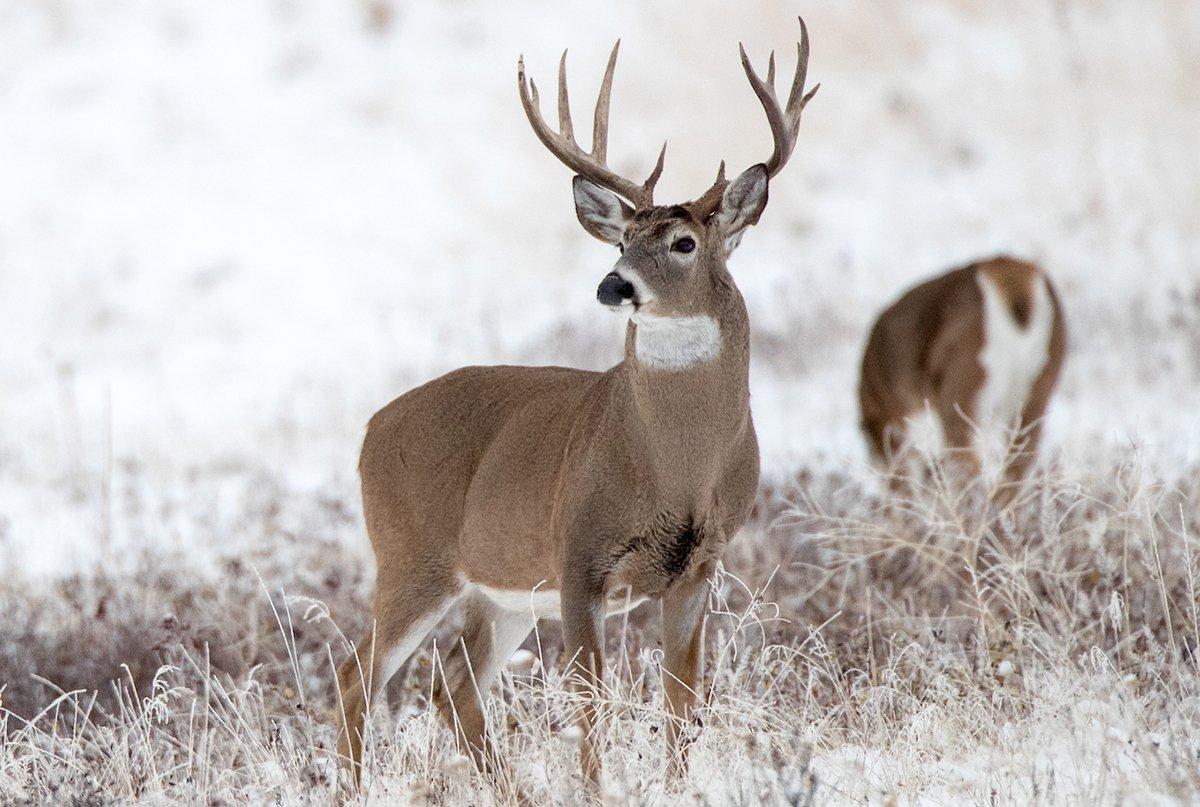Try these common-sense setups to catch a bruiser buck during daylight
We make hunting the rut way too complicated, so let's simplify things. In states above the 35th parallel with a November rut, the key to killing a big deer is to hang a few treestands (or build a few ground posts) in areas where a big deer is likely to cruise or chase by with a doe — in daylight. Here are three simple but deadly sets.
Scrape Post
Forget about watching one buck's scrape line. It's too iffy. Instead, scout for a community scrape, which might be as big and black as a tractor tire, reeking of musk, with fresh trails and rubs nearby. As its name implies, a community scrape is frequented by multiple does and bucks. Not all deer will come in to contact the scrape, but they will mix and mingle in the area around it. The deeper a big scrape is hidden in the woods, and the more cover that surrounds it, the better your chances of catching an old buck in shooting light.
If I know there's a fairly stable wind in the spot I plan to hunt, I like to hang a treestand 75 to maybe 100 yards downwind of a communal scrape. Deer can circle into it from any direction, so that decreases the chances of them seeing or smelling me. With a bow, set up within arrow range of a trail or thick edge where a buck might prowl. With a muzzleloader, shotgun, or rifle, you should be able to whack a big deer that cruises anywhere through the breeding commune.
Ridge Perch
Bucks love to troll for does along a hardwood ridge laced with saplings, pines, and thickets. Scout for a main doe trail trampled to bare earth, and hook a treestand downwind of it. It's hard to tell what you'll see. A buck might lollygag down the path, nose to the ground. Or he might parallel the trail, skulking along through cover on the downwind side and close to your setup. Or he might pop out of a thicket and cut the trail at a choke point. Be ready for anything.
On a ridge, the wind and thermals are generally steady and somewhat predictable. That's good for a buck as he tries to sniff out a doe. And it's good for you as you set up and try to cut his heated mission short.
Funnel Set
A strip of timber between two fields; a long, deep hardwood draw; or a twisting, brush-choked creek bottom. Any long, linear funnel that connects core areas where various groups of does bed and feed is a hotspot during the rut. Research of GPS-collared deer shows that — throughout November — bucks make long, linear excursions to cover country fast to maximize their chances of contacting hot does.
When archery hunting, set several stands several hundred yards apart along an extended doe funnel, on the downwind side of trails blazed with scrapes and rubs or, better, at the junction of several well-used paths. When carrying a gun, hang a stand or set a ground blind (or simply go old-school and sit against a tree) on a point or ridge side that commands a good view of a funnel below. You're almost guaranteed to see deer coming or going, and there's a good chance one will be a shooter buck.
(Don't Miss: 3 Off-the-Wall Whitetail Tactics)









